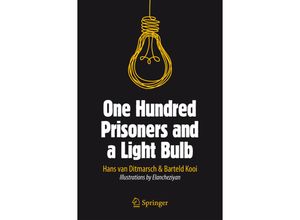A group of 100 prisoners all together in the prison dining area are told that they will be
all put in isolation cells and then will be interrogated one by one in a room containing a
light with an on off switch. The prisoners may communicate with one another by toggling the
light switch (and that is the only way in which they can communicate). The light is initially
switched off. There is no fixed order of interrogation or interval between interrogations and
the same prisoner may be interrogated again at any stage. When interrogated a prisoner can
either do nothing or toggle the light switch or announce that all prisoners have been
interrogated. If that announcement is true the prisoners will (all) be set free but if it is
false they will all be executed. While still in the dining room and before the prisoners go
to their isolation cells (forever) can the prisoners agree on a protocol that will set them
free? At first glance this riddle may seem impossible to solve: how can all of the necessary
information be transmitted by the prisoners using only a single light bulb? There is indeed a
solution however and it can be found by reasoning about knowledge. This book provides a
guided tour through eleven classic logic puzzles that are engaging and challenging and often
surprising in their solutions. These riddles revolve around the characters' declarations of
knowledge ignorance and the appearance that they are contradicting themselves in some way.
Each chapter focuses on one puzzle which the authors break down in order to guide the reader
toward the solution. For general readers and students with little technical knowledge of
mathematics One Hundred Prisoners and a Light Bulb will be an accessible and fun introduction
to epistemic logic. Additionally more advanced students and their teachers will find it to be
a valuable reference text for introductory course work and further study.

